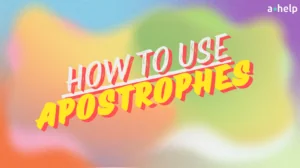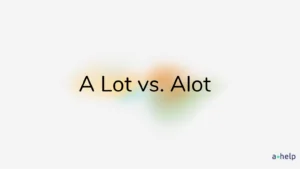Possessive nouns are a fundamental aspect in any language, English included. They indicate ownership or possession. They help us specify who or what owns something, adding clarity and precision to our sentences. Forming possessive nouns typically involves adding an apostrophe and sometimes an “s” to the noun. In this guide, we’ll explore the various rules and guidelines for forming possessive nouns, helping you understand grammar better.

✅ AI Essay Writer ✅ AI Detector ✅ Plagchecker ✅ Paraphraser
✅ Summarizer ✅ Citation Generator
What Are Possesive Pronouns?
A possessive noun is a noun that shows ownership or possession. It indicates that something belongs to someone or something else. To form a possessive noun, we usually add an apostrophe and an “s” (‘s) to the end of the noun. For example, in “Sarah’s book,” the possessive noun “Sarah’s” shows that the book belongs to Sarah.
It’s important to distinguish between possessive nouns and plural nouns. Plural nouns show that there’s more than one of something, and they are often formed by adding “s” or “es” to the end of the noun without adding any apostrophes. They do not show ownership. For example, “cats” is a plural noun that means more than one cat, but it does not indicate that something belongs to the cats.
Examples
| Possessive Noun | Meaning | Plural Noun | Meaning |
|---|---|---|---|
| Sarah’s | Smth. belongs to Sarah | cats | More than one cat |
| dog’s | Belonging to the dog | dogs | More than one dog |
| children’s | Smth. belongs to the children | children | More than one child |
| teachers’ | Belonging to the teachers (plural) | teachers | More than one teacher |
Forming Possessive Nouns
To form possessive nouns, we need to follow certain rules depending on whether the noun is singular or plural.
Singular Nouns
For most singular nouns, we make them possessive by adding an apostrophe and an “s” (‘s) to the end of the noun. For example:
- Cat’s toy (the toy belongs to one cat)
- Sarah’s book (the book belongs to Sarah)

Plural Nouns
For plural nouns that already end in “s,” we make them possessive by adding just an apostrophe (‘) to the end of the noun. For example:
- Cats’ toys (the toys belong to multiple cats)
- Teachers’ lounge (the lounge for the teachers)
Special Cases
📌 For plural nouns that do not end in “s,” we add an apostrophe and an “s” (‘s) to make them possessive. For example, “children’s toys” (the toys belong to the children).
📌 For compound nouns, we add an apostrophe and an “s” (‘s) to the end of the entire noun. For example, “mother-in-law’s house” (the house of the mother-in-law).
📌 For names ending in “s,” we can either add an apostrophe and an “s” (‘s) or just an apostrophe (‘). For example, “James’s book” or “James’ book” (the book belongs to James).
Wrapping Up
Possessive nouns play a crucial role in indicating ownership in the English language. Remember that singular nouns typically require an apostrophe followed by an “s,” while plural nouns that already end in “s” just need an apostrophe. Regular practice and attention to these guidelines will help you become more confident in using possessive nouns correctly in your writing and communication.
Follow us on Reddit for more insights and updates.





Comments (0)
Welcome to A*Help comments!
We’re all about debate and discussion at A*Help.
We value the diverse opinions of users, so you may find points of view that you don’t agree with. And that’s cool. However, there are certain things we’re not OK with: attempts to manipulate our data in any way, for example, or the posting of discriminative, offensive, hateful, or disparaging material.